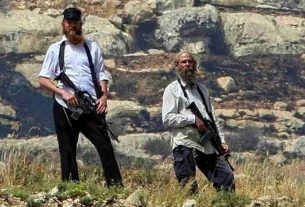Fri 18 September 2020:
Saudi Arabia’s Heritage Commission on Wednesday announced the discovery of ancient human and animal footprints said to be 120,000 years old in the north-west Tabuk region of the Kingdom. The results of the study were also published yesterday in Science Advances.
The head of the commission, Jasir Al-Herbish, told journalists that the footprints represent the earliest-known evidence of human habitation on the Arabian Peninsula.
The #Saudi Heritage Commission has just announced the discovery of human & animal footprints -including elephants – in the north western region of Tabuk that date back 120,000 years ! https://t.co/2KYupzvJsU
— Fahad Nazer فهد ناظر (@KSAEmbassySpox) September 16, 2020
The joint team of Saudi and international archaeologists found traces of seven humans, 107 camels, 43 elephants and other animals such as ibex, deer and bovine families. Up to 233 fossils of elephant and gazelle bones were unearthed in addition to evidence of the existence of predators.
The humans may have hunted the large mammals but did not stay long in the area. They are thought to have stopped and foraged at a shallow lake before continuing on a longer journey.
“Just as excavation and exploration reveal oil, gold and treasures in the earth,” explained Al-Herbish, “it connects us with the legacy of ancient civilisations that inhabited our homeland and provides us with evidence that this part of the world was and still is a source of inexhaustible civilisations.”
The finds are the latest in the Green Arabian Peninsula project headed by Michael Petraglia of the Max Planck Institute for the Science of Human History. The research team has spent the past 10 years working in various parts of the Kingdom such as Tabuk, Najran, Riyadh, Hail and Madinah.
According to Al-Herbish, the peninsula was at the time more semi-arid with grasslands. “[This] confirms that Arabia was a major crossroads between Africa and the rest of Eurasia throughout prehistoric times.”
Last month, researchers under the auspices of the project revealed that ancient stone structures known as mustatils could be the oldest man-made structures in the world.
In 2018, Arab News reported the discovery of 85,000-year-old human remains in the Nefud Desert on the outskirts of Tabuk.
Article Originally published in Middle East Monitor CLICK HERE





